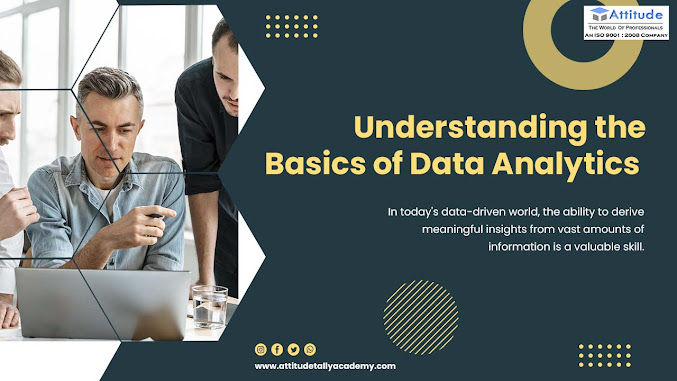Understanding the Basics of Data Analytics
Introduction: In
today's data-driven world, the ability to derive meaningful insights from vast
amounts of information is a valuable skill. This is where data analytics comes
into play, allowing individuals and organizations to make informed decisions
based on data. In this step-by-step tutorial, we will delve into the basics
of data analytics, guiding you through the fundamental concepts and
processes.
The
Foundation: Basics of Data Analytics To embark on our data analytics
journey, let's start with the basics. Data analytics involves the examination,
cleansing, transformation, and modeling of data to discover useful information,
draw conclusions, and support decision-making. The key components of data
analytics include collecting data, processing it, analyzing patterns, and
interpreting the results.
Understanding
Key Terms: Data Analytics Tutorial Before we dive deeper, let's
clarify some essential terms that will be crucial throughout this data
analytics tutorial:
Data
Collection: The first step in any data analytics process is gathering
relevant data. This can include structured data from databases or unstructured
data from various sources like social media, sensors, or text files.
Data Cleaning: Once the data is collected, it needs to be
cleaned and preprocessed to remove inconsistencies, errors, and irrelevant
information. This ensures the accuracy and reliability of the analysis.
Data
Transformation: Transforming data involves converting it into a suitable
format for analysis. This may include normalization, aggregation, or other
processes to make the data more manageable and standardized.
Data
Analysis: The heart of data analytics lies in analyzing the processed
data. Statistical methods, machine learning algorithms, and visualization
techniques help uncover patterns, trends, and relationships within the data.
Interpretation
and Decision-Making: After analyzing the data, it's essential to interpret
the results and make informed decisions. This step often involves communicating
findings to stakeholders through reports or visualizations.
Step-by-Step
Guide to Data Analytics: Now that we have a solid understanding of the basics,
let's walk through a step-by-step tutorial on how to perform data analytics:
Define Your
Objectives: Clearly outline your goals and objectives for the data
analysis. What insights are you looking to gain? What decisions will be
influenced by the results?
Collect and
Explore the Data: Gather relevant data for your analysis and explore
its characteristics. This step involves understanding the structure of the
data, identifying potential issues, and ensuring it aligns with your
objectives.
Data
Cleaning and Transformation: Cleanse the data by handling
missing values, removing outliers, and standardizing formats. Transform the
data to make it suitable for analysis, ensuring consistency and accuracy.
Choose Your
Analytical Tools: Select the appropriate tools and techniques for your
analysis. This may involve using statistical methods, machine learning
algorithms, or visualization tools based on the nature of your data and
objectives.
Conduct the
Analysis: Apply the chosen methods to analyze the data. Explore
patterns, correlations, and trends that provide insights into your objectives.
Interpretation
and Decision-Making: Interpret the results and draw conclusions.
Communicate your findings in a clear and actionable manner to support informed
decision-making.
Conclusion: In this
tutorial, we've covered the basics of data analytics, providing a step-by-step
guide to help you navigate through the process. As you continue to explore the
fascinating world of data analytics, remember to adapt and refine your approach
based on the specific requirements of your projects. With a solid foundation in
the basics, you'll be well-equipped to harness the power of data for informed
decision-making.
Whether you're a beginner in data
analytics tutorial or looking to enhance your skills, understanding the
fundamentals is key. Stay curious, practice regularly, and embrace the
continuous learning journey in the dynamic field of data analytics.




Comments
Post a Comment